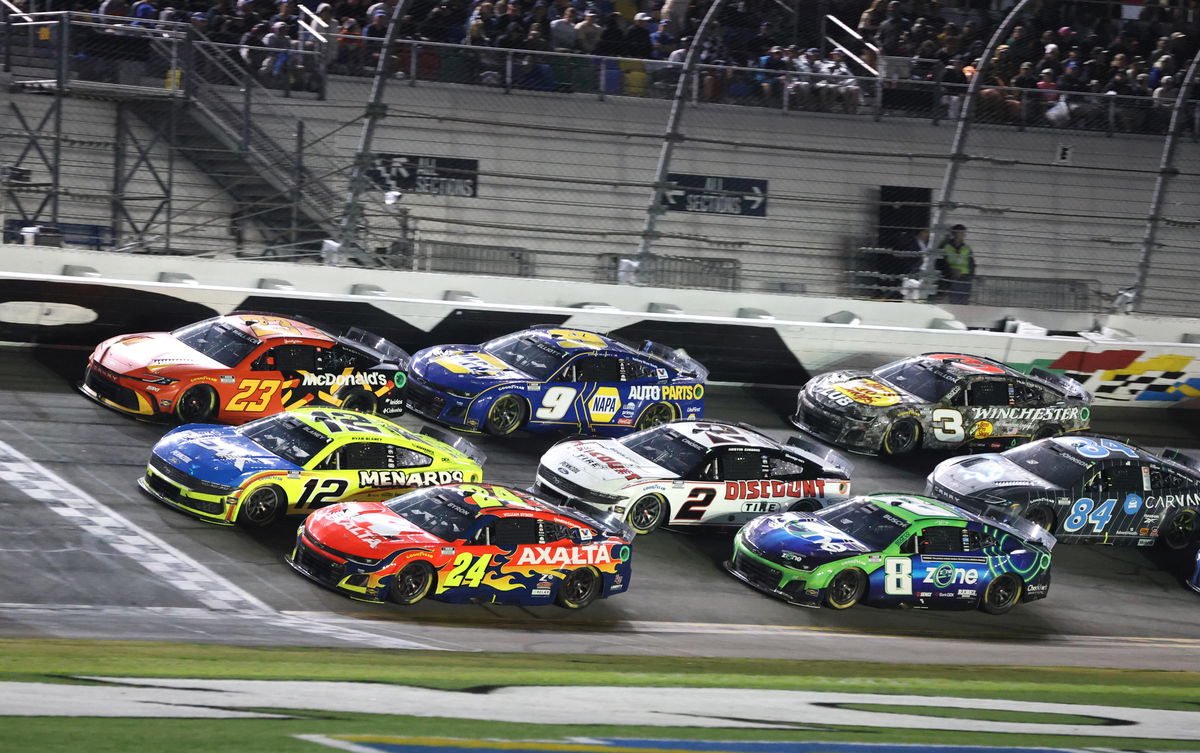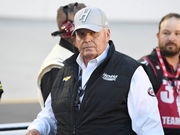
Imago
DAYTONA BEACH, FL – FEBRUARY 16: William Byron 24 Hendrick Motorsports Axalta Chevrolet leads the field by the start/finish line during the NASCAR, Motorsport, USA Cup Series Daytona 500 on February 16, 2025, at Daytona International Speedway in Daytona Beach, FL. Photo by Michael Bush/Icon Sportswire AUTO: FEB 16 NASCAR Cup Series DAYTONA 500 EDITORIAL USE ONLY Icon250216026500

Imago
DAYTONA BEACH, FL – FEBRUARY 16: William Byron 24 Hendrick Motorsports Axalta Chevrolet leads the field by the start/finish line during the NASCAR, Motorsport, USA Cup Series Daytona 500 on February 16, 2025, at Daytona International Speedway in Daytona Beach, FL. Photo by Michael Bush/Icon Sportswire AUTO: FEB 16 NASCAR Cup Series DAYTONA 500 EDITORIAL USE ONLY Icon250216026500
The Cup Series is NASCAR’s crown jewel. It boasts the biggest names, secures the most lucrative sponsorship deals, and gets the most attention from the media. And while fans look forward to the action on Sundays, many feel that the real essence of stock car racing is taking place further down the ladder. Yes, it’s the Truck Series.
Watch What’s Trending Now!
With the limitations of the Next-Gen car, the Craftsman Truck Series has now become one of the purest forms of the sport, despite sustainability woes and dwindling attendance. But what good is NASCAR’s ‘best racing’ when nobody is watching it? And, why are fans turning their backs on the grassroots, while complaining about the quality of races at the highest level? We did a bit of research, and here’s what we feel is the reason;
ADVERTISEMENT
Roots Racing, Reimagined
The ‘third tier’ started as a unique experiment in the mid-1990s, featuring relatively unknown drivers and traditional Southern tracks on the calendar. While it was designed to be a feeder series, a platform for talented young drivers to showcase their skills and climb through the ranks, many felt that it had the essence and connection to NASCAR’s origin.
While the Next-Gen car continued to struggle on short tracks, the trucks embraced it with open arms, tearing it up at venues such as Martinsville Speedway, Rockingham, and North Wilkesboro.
And, fans?
ADVERTISEMENT
They have been desperate to see close-contact racing at such venues for years now, and the Truck Series delivered on those expectations in spades. It also mixed the calendar with intermediates, superspeedways, and even dirt tracks, giving the series the kind of ‘rawness’ that fans missed. It was rough around the edges in the best possible way, and the variety of tracks on the calendar gave the series a ‘run-what-you-brung’ feel.
Top Stories
New Charter Deal Triggers ‘Financial Frenzy’ as NASCAR Teams Set for Massive Payday

Rick Hendrick Strikes Fear in NASCAR Fans With Chevy’s New “Illegal” Car

Major Blow to Trackhouse Racing as Team Penske Steals Veteran Crew Chief Back in Unexpected Move

Martin Truex Jr’s Former Crew Chief Ends 12-Year Fight In Huge Personal Announcement

Chevy Team to Enter Kyle Larson’s Series as Michael Jordan Ends NASCAR’s Monopoly

ADVERTISEMENT
Unfiltered Competition and Rising Stars
What makes the Truck Series unique are the drivers themselves. The likes of Kyle Busch, Chase Elliott, Joey Logano, and William Byron learned the ropes racing trucks back in the day.
For fans, what makes the series so much more interesting are the intense rivalries that can flare up in the blink of an eye, and the style of racing is pretty unrestrained, providing action-packed drama week after week.
Unlike the Cup and Xfinity Series, the Truck Series drivers don’t operate by the same PR standards, which means personalities come through naturally in interviews or on the radio communications, and fans enjoy that unfiltered and authentic feel that is rarely seen in the world of motorsports these days.
ADVERTISEMENT
Ultimately, stock car racing enthusiasts want to see the sport they grew up adoring, and NASCAR’s third tier comes closest to that experience right now.
Loyal Fan Base and Regional Power
Unlike the Cup Series, which is steering away from its Southern roots by adopting more road courses and looking to expand into ‘urban’ markets, the Truck Series still enjoys plenty of regional support. Races in the South and Midwest often see passionate fans in the grandstands, cheering on relatively unknown drivers from the sidelines. While from a sheer numbers standpoint, NASCAR’s highest level surpasses the other two national series, there’s no doubt that the trucks have the most committed fanbase of them all.
ADVERTISEMENT
The television ratings for the Truck Series are as steady as ever before, and tracks consistently show strong turnout. Tickets are affordable, and the sport, along with the drivers, is relatable to the average fan. NASCAR was never a sport for the elites by the elites, and the Truck Series still reflects its working-class roots, which in turn is repaid through loyalty and support.
Lower Budgets, Higher Stakes
The gulf in performance is a lot higher in the Cup Series. Heavyweight teams like Hendrick Motorsports, Team Penske, and Joe Gibbs Racing have multimillion-dollar budgets and vast engineering resources to gain the advantage over some of the smaller sides, but the margins are a lot tighter in the Truck Series. Team owners are forced to try different ways of stretching their resources, and that parity is reflected on the track.
ADVERTISEMENT
This season alone, NASCAR’s third tier has had more than 10 different winners, and surprise storylines are quite common. Drivers aren’t restricted by financial limitations; instead, they simply make the most of their circumstances to improve the quality of the races.
For many, it’s not just a question about results, but survival, and getting wins can make or break a racer’s career, giving them more incentive and hunger to perform.
ADVERTISEMENT

ADVERTISEMENT
Innovation Lab for NASCAR’s Future
The sport uses its ‘third tier’ to test drivers’ capabilities, experiment with new formats, try out different rules, and explore different locations. While the national series can stand on its own, there’s no doubt that trucks play an important role in developing the sport and pushing it to different heights. That unpredictability makes it exciting for fans to tune in.
After all, who doesn’t want to see the next up-and-coming superstar break into the world of stock car racing, rise through the ranks, and make a name for himself?
Cultural Value vs. Commercial Value
The Truck Series might not have the same kind of glamor as the Xfinity and Cup Series, but the races are action-packed. Sponsorship dollars are harder to come by, and the broadcast windows provided by networks are far from ideal. But while it might be struggling from a commercial and sustainability standpoint, it makes up for it in terms of cultural value.
In many ways, the trucks offer the most authentic racing the sport has to offer, and their role in grassroots development makes them an invaluable asset to the sanctioning body.
Conclusion
While the headlines will continue to be dominated by the Cup and Xfinity Series, the Truck Series continues to deliver action-packed races in the background. For many long-term fans who have complained about NASCAR’s highest level losing its soul at a time when the sport is looking to expand, the authenticity and old-school charm of the third tier might be exactly what they’re looking for.
And if the sanctioning body ever chooses to go back to what made it great in the first place, the answer might be right in front of them, on Friday nights and Saturday afternoons, when the trucks are on the tracks.
ADVERTISEMENT
ADVERTISEMENT
ADVERTISEMENT

